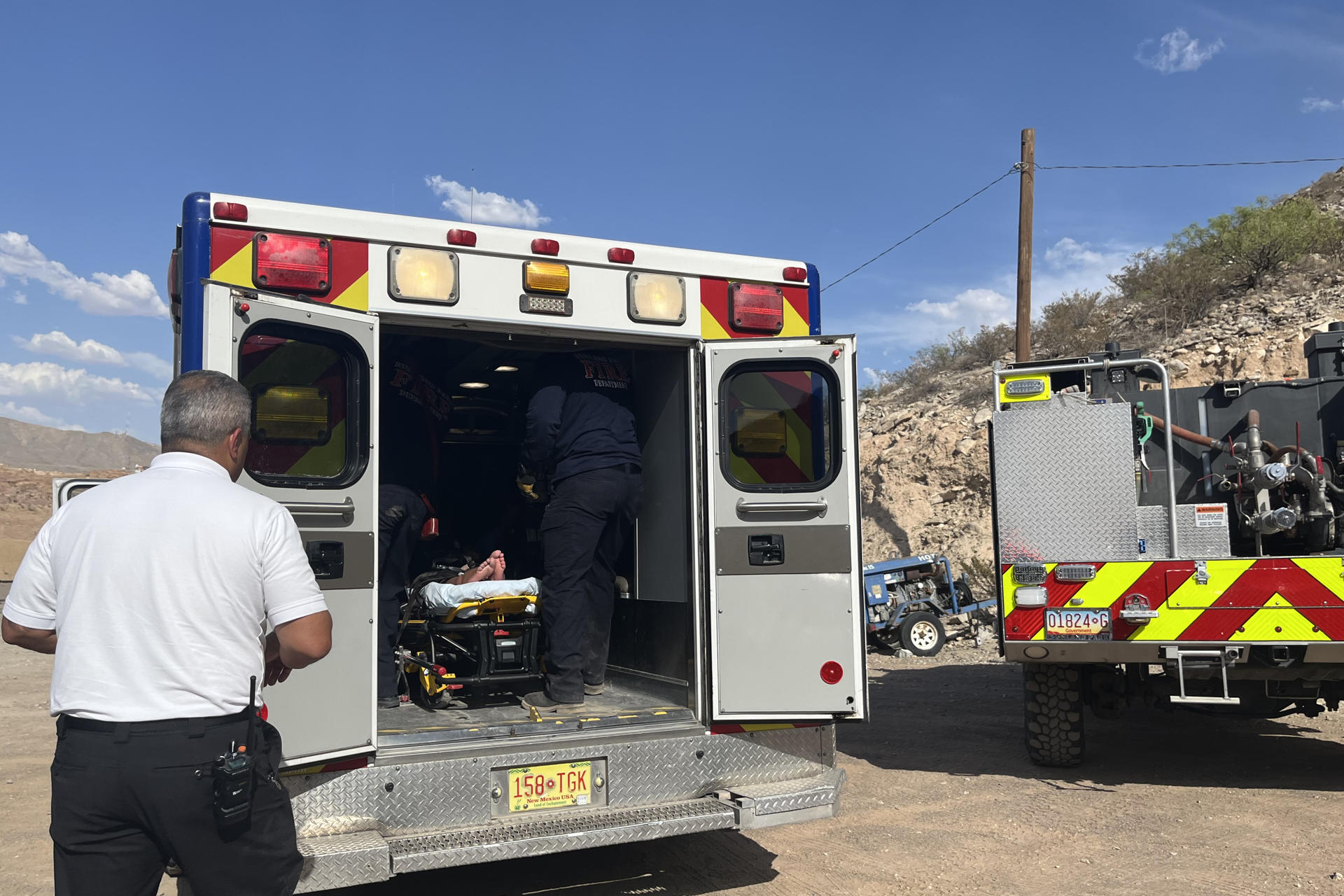Deaths at the US border do not stop and new policies could make it worse
El Paso (USA), June 12 – Accompanied by four agents, Juan Pablo descends the mountain, turning his back to a statue of Jesus with open arms that crowned the summit. At the base, inside an ambulance, is his wife. The Border Patrol located the couple after they crossed into the United States from Mexico in The number of migrants who die or receive emergency care along the southern border has not stopped increasing, according to data compiled by Customs and Border Protection (CBP). In 2022, CBP reported having found 895 bodies of deceased migrants in the border area, a significant increase of over 200% from the previous year. The high temperatures and new restrictions on asylum could exacerbate this situation. The new immigration restrictions prohibit the majority of people detained crossing irregularly from being able to request asylum. However, activists and experts believe that the policies of the US force migrants to take these risky paths and rely on traffickers.

Veröffentlicht : vor einem Jahr durch Scribe in
El Paso (USA), June 12 – Accompanied by four agents, Juan Pablo descends the mountain, turning his back to a statue of Jesus with open arms that crowned the summit. At the base, inside an ambulance, is his wife.
The Border Patrol located the couple after they crossed into the United States from Mexico in a desert area east of El Paso, Texas.
They are both 25 years old and come from Honduras. Their intention was to pass undetected, but after hours of trying to hide from the authorities, at more than 40 degrees Celsius, Kensy’s body gave out and collapsed.
“It has his initials inside,” says Juan Pablo, showing his wedding ring. The paramedics wipe their partner’s entire body with a damp cloth. She breathes, faintly. Her bare feet, motionless, contrast with the white of her stretcher.
More and more people are receiving emergency treatment or dying in the border area. The high temperatures that have surpassed historical records and the new restrictions on asylum enacted by the Joe Biden Administration could aggravate this situation.
When the Border Patrol needs emergency support with a migrant, an alarm sounds at the fire station in Sunland Park, a small town surrounded by desert and with mountains that act as a natural border with Mexico.
The Cristo Rey hill, adorned by the more than eight-meter religious statue, is popular among Catholics in the region because it is marked with the stations of the Viacrusis.
The area is also a well-known crossing point for migrants, who like Juan Pablo and Kensy, try to cross this hostile terrain to be able to cross into the United States.
“Summer is the season in which we are busiest,” Daniel Medrano, head of the fire department, tells EFE, “this does not stop and there are still four months left.”
Most of the people they serve are in “very bad condition.” In other cases, they already find a corpse.
The problem extends beyond this region. For four years, the number of migrants who die or receive emergency care along the entire southern border has not stopped increasing.
In 2022, the last year for which data is available, Customs and Border Protection (CBP) reported having found 895 bodies of deceased migrants in the border area.
It is the highest number of deaths at the border since 1998 and represents an increase of more than 200% compared to 2020, when authorities found 254 dead, according to CBP data compiled by the organization WOLA.
Similarly, in 2022, more than 7,112 emergencies related to migrants were recorded at the border, while in 2020, this figure was 1,196.
Authorities blame migrant smugglers, known as coyotes, for putting people at risk, taking them along rugged routes with the promise of reaching US soil.
“The reality is that it is not a safe step, but rather it can turn into a nightmare,” Claudio Herrera, Border Patrol agent, explains to EFE.
The coyotes cross the migrants in groups of up to ten people and if one of them cannot continue walking “they leave him behind,” he says.
“There needs to be a change of mentality in the migrant community; “Think twice before crossing,” the agent emphasizes.
However, activists and experts consulted by EFE believe that it is the policies of the United States that force migrants to take these risky paths and depend on traffickers.
The new immigration restrictions, which prohibit the majority of people who are detained crossing irregularly from being able to request asylum, are an example of this, says Edith Tapia, an expert at the International Rescue Committee.
Until now, people from countries like Venezuela, Cuba or Nicaragua crossed the border to surrender to the authorities and request asylum.
The changes introduced last week may cause migrants of these nationalities to try to “escape” by taking more remote paths where there is no water and they suffer the risk of heatstroke, adds Fernando García, from the organization Border Network for Human Rights.
“It is a failed policy, with a high human cost,” he says.
Keep reading:
• NGOs in Mexico urge migrants not to cross into the United States and avoid deportations
• Asylum restrictions in the US: Authorities seek “order” and activists criticize their harshness
• Eleven migrants hospitalized in Texas after being found hiding in a trailer: 26 people were traveling with little air and water
